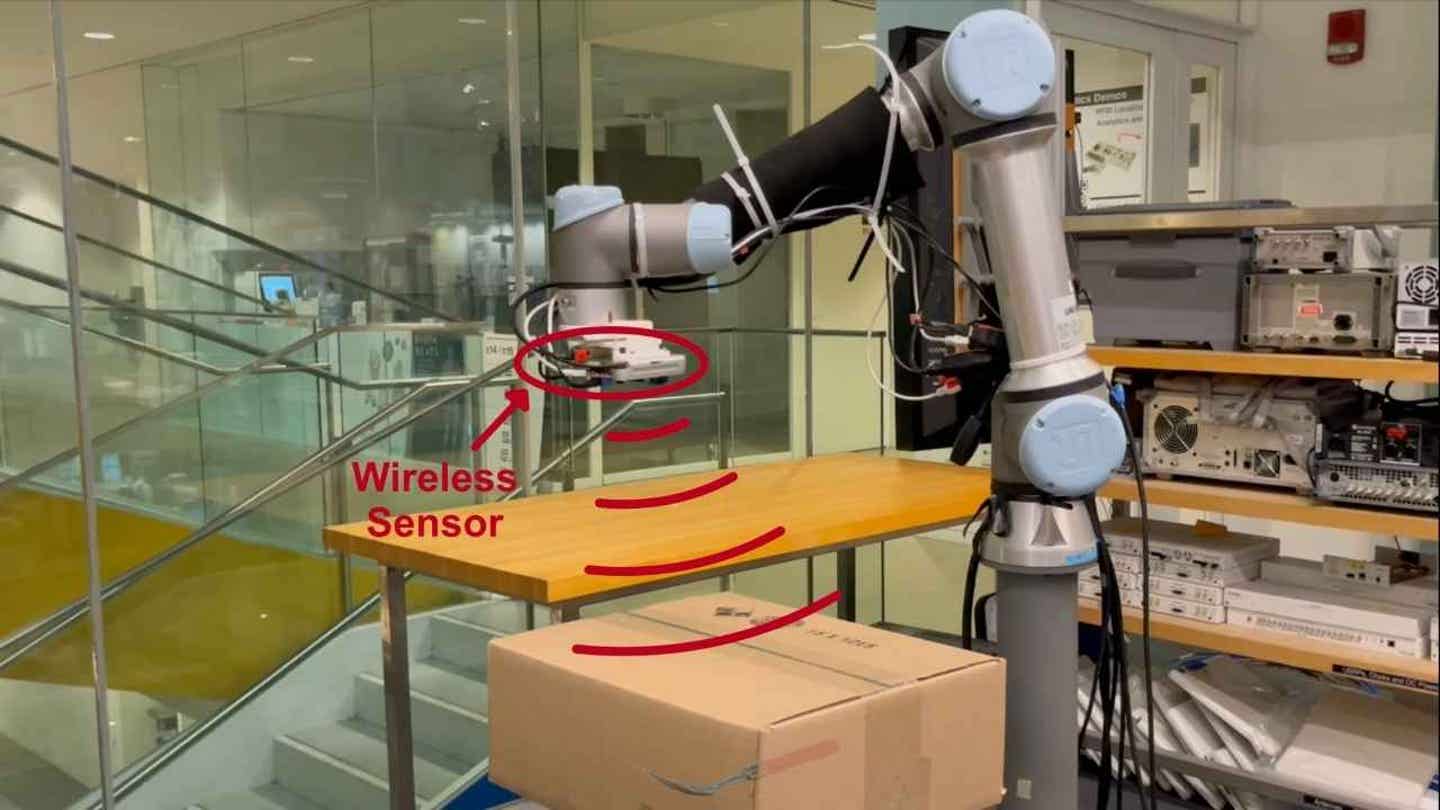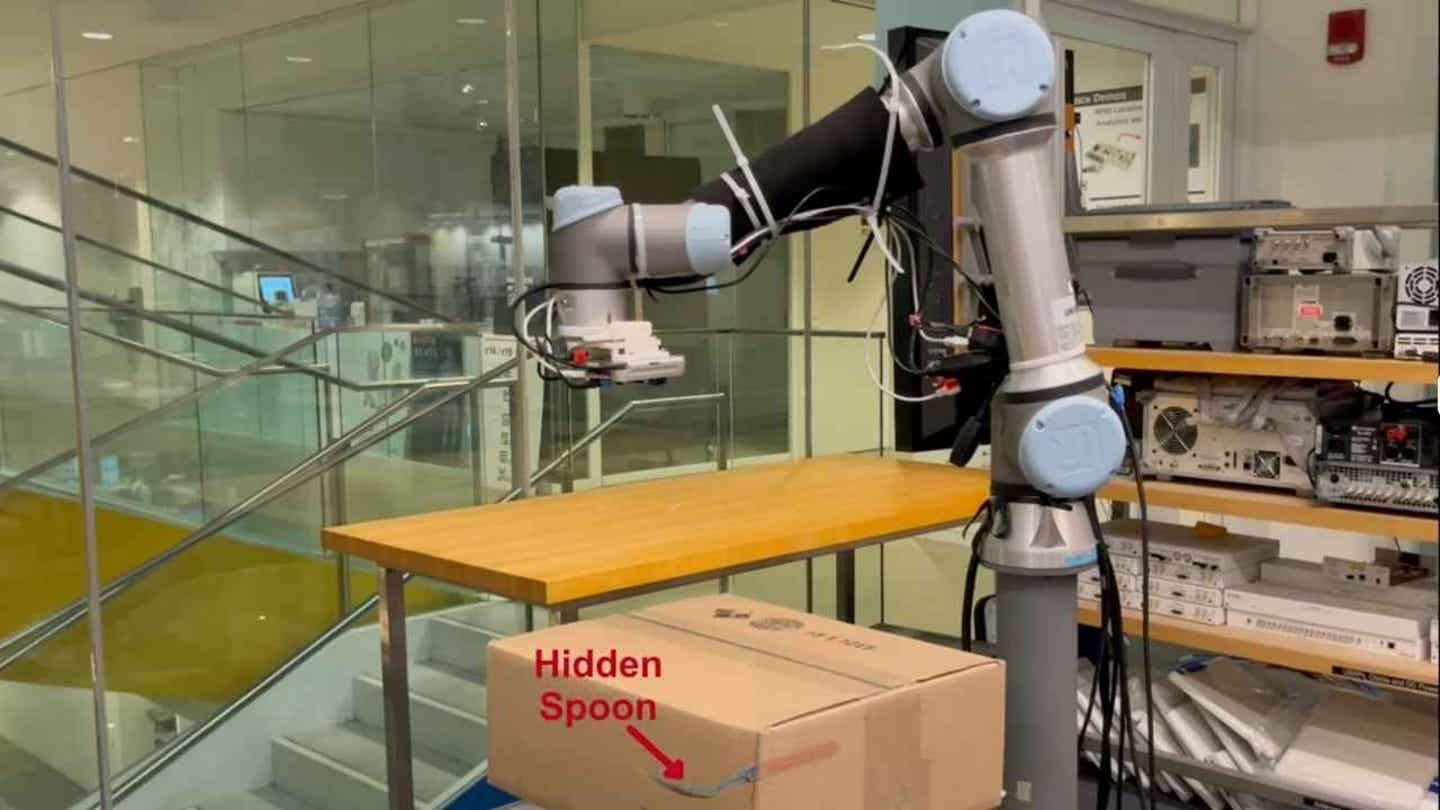NEWNow you can have Fox News articles read to you!
Have you ever wondered why a robot would need to see inside a sealed box?
Looking beyond the initial eerie concept, a recent breakthrough from MIT could soon enable warehouse robots to perform an impressive task. This cutting-edge technology uses millimeter wave (mmWave) imaging to detect damage inside sealed cardboard boxes without the need to open them.
By utilizing the same type of signal found in Wi-Fi, the researchers at MIT have developed a system called mmNorm. This innovative technology allows robots to scan containers and create precise 3D models of the objects inside by analyzing how signals bounce back from hidden surfaces.
Sign up for my FREE CyberGuy Report
Receive my top tech tips, urgent security alerts, and exclusive deals directly to your inbox. Plus, get immediate access to my Ultimate Scam Survival Guide – all for free when you sign up at CYBERGUY.COM/NEWSLETTER
NONINVASIVE BRAIN TECH AND AI MOVES ROBOTIC HAND WITH THOUGHT
A robotic arm scans a sealed box using mmWave radar to detect objects inside (MIT)
How robots detect damage inside boxes using mmWave imaging
Millimeter waves have a unique ability to penetrate materials such as cardboard, plastic, and even interior walls. When these waves encounter an object inside a box, they reflect back. The mmNorm system captures these reflections and feeds them into an algorithm to estimate the shape and direction of the surface of the hidden item.
Unlike traditional radar systems, mmNorm addresses a challenging property known as specularity, which deals with how radio waves bounce off shiny or angled surfaces, much like a mirror. By estimating the surface normal (the direction a surface is facing), the system’s accuracy significantly improves. This method combines reflections from multiple antennas that determine the surface normal direction based on signal strength, enhancing the accuracy of the 3D reconstruction.
WHAT IS ARTIFICIAL INTELLIGENCE (AI)?
The technology powering robots that detect damage inside boxes
What sets mmNorm apart is its intelligent use of physics. Instead of disregarding reflections that bounce away from the radar (as most systems do), it captures them to deduce the shape and orientation of hidden surfaces. Lead author Laura Dodds explained that the system not only tracks the origin of a signal but also analyzes the direction the surface is facing. To achieve this, the MIT team employed a robotic arm equipped with a radar unit. As the arm moved around a sealed box, it collected multiple measurements, constructing a detailed 3D image of the contents.

A robotic arm scans a sealed box using mmWave radar to detect objects inside (MIT)
Why robots that detect damage inside boxes are a game-changer for warehouses
During testing, mmNorm demonstrated 96% accuracy in reconstructing complex items, such as power drills and silverware. This marks a significant improvement compared to the 78% accuracy achieved by similar systems. In a warehouse environment, this means that robotic arms could inspect package contents on a conveyor belt without the need to unpack them.
Furthermore, this technology paves the way for humanoid robots to navigate warehouses and assess packages for damage or missing components in real-time. However, it is important to note that the technology may not perform well for objects hidden behind metal or very thick walls, limiting certain applications.
GET FOX BUSINESS ON THE GO BY CLICKING HERE
Where else could robots detect damage inside boxes and make an impact
Besides warehouse automation, this technology opens up various other promising applications. In factory production lines, robots equipped with the ability to detect damage inside boxes could swiftly inspect goods without the need to open packages, aiding in maintaining high-quality standards.
In assisted-living facilities, a similar approach could enhance safety by checking container contents without disrupting residents. Additionally, in security screening, the capability to see through sealed boxes could improve threat detection without adding strain on bandwidth since the system utilizes the same mmWave signals as existing technologies. The research team aims to enhance the resolution of mmNorm further and enhance its performance on less reflective objects, making it even more versatile for future uses.

A robotic arm scans a sealed box using mmWave radar to detect objects inside (MIT)
Kurt’s key takeaways
We may be on the brink of an era where robots not only move boxes but also understand their contents. MIT’s mmNorm system provides a glimpse into the future of warehouse efficiency, safety, and automation. If robots can detect damage inside boxes without opening them, it could revolutionize how items are shipped, sorted, and delivered.
CLICK HERE TO GET THE FOX NEWS APP
Are we ready to trust machines to determine what’s damaged and what’s intact without ever opening the box? Let us know by reaching out to us at Cyberguy.com/Contact
Sign up for my FREE CyberGuy Report
Receive my top tech tips, urgent security alerts, and exclusive deals directly to your inbox. Plus, get immediate access to my Ultimate Scam Survival Guide – all for free when you sign up at CYBERGUY.COM/NEWSLETTER
Copyright 2025 CyberGuy.com. All rights reserved.
Kurt “CyberGuy” Knutsson is an award-winning tech journalist with a passion for technology, gear, and gadgets that enhance life. He contributes to Fox News & FOX Business in the mornings on “FOX & Friends.” Have a tech question? Subscribe to Kurt’s free CyberGuy Newsletter, share your voice, a story idea, or comment at CyberGuy.com.





